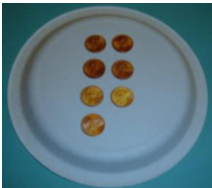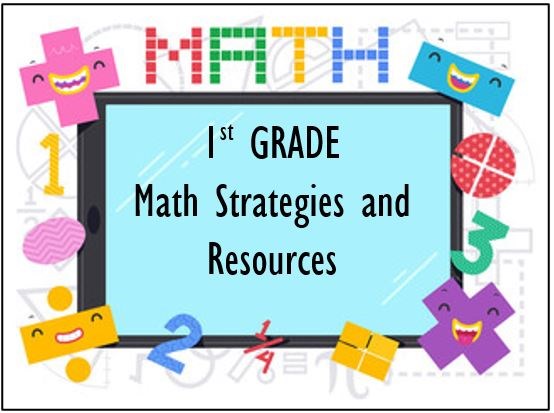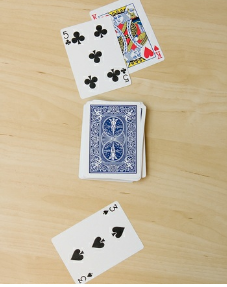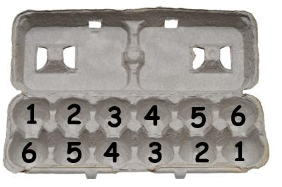1st Grade Math Strategies and Resources
STRATEGY: Bears in a Cave (Missing part of 10)Purpose: Help students learn how to count up to 10 which makes adding easier and faster. The goal for students is to make a 10.Supplies: 10 small objects that will fit under a plate (pennies, beans, counters, buttons), 1 plate Pencil and paper Directions: 1. Turn a plate upside down (cave) and hide some of the 10 objects (bears) under the plate and put the remainder of the objects on top of the plate. 2. Count the objects on top of the plate and find the missing number of objects that are under the plate that equals 10. 3. Write an addition sentence and a related subtraction sentence (ex: The number sentences for three counters under the plate and seven counters on top is 7 + 3 = 10 and 10 –3 = 7). 4. Repeat with different numbers of counters under the plate. 5. Do the activity again with a different number of objects(bears).  Checkout out this Youtube video of how to use a 10 frame to figure out the missing part of 10. |
STRATEGY: Addition War Game
Purpose: Are you tired of addition worksheets? This fun, addition focused take on the classic card game War is a great way to help your child learn a bit of math! It’s fun, it can be played practically anywhere and best of all, it'll help your kid master his addition skills. What You Need: Deck of cards with the face card removed2 or more players What You Do: 1. Tell the players that for the purposes of the game aces= 1. Then, have your child shuffle the deck of cards. 2. Have her deal the entire deck out evenly between both her and her friend. 3. The rules of the game are pretty much like the card game War (both kids flip over a card at the same time), but instead of the player with highest card winning, the first player to say the sum of the two cards aloud wins the two cards. 4. The first child to accumulate all of the cards is the winner. Copyright © 2020 Education.com LLC All Rights Reserved |
STRATEGY: Number Line (Math Movement) |
STRATEGY: Egg Carton Addition
Purpose: Students will learn how to add two numbers Material: Egg Carton, pennies Directions: 1.Write the numbers 1 -6 on the bottom of each row of an egg carton. 2. Place 2 pennies in the carton. 3. Close the lid and shake it up. 4. Open the lid. Add together the two number where the pennies landed on to find the sum. 5. Write the addition sentence. 6.Repeat ***When your child gets good with addition sum within12, create new egg cartons using larger numbers with sums within 20. |





